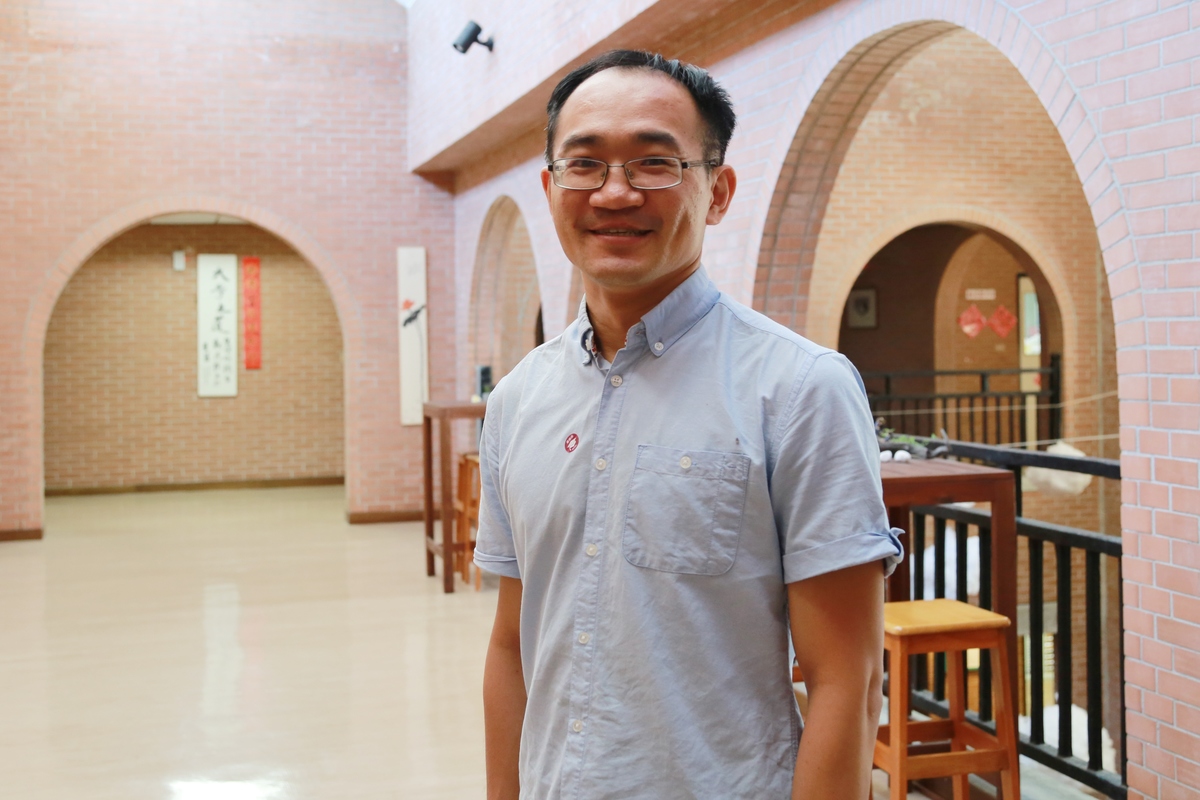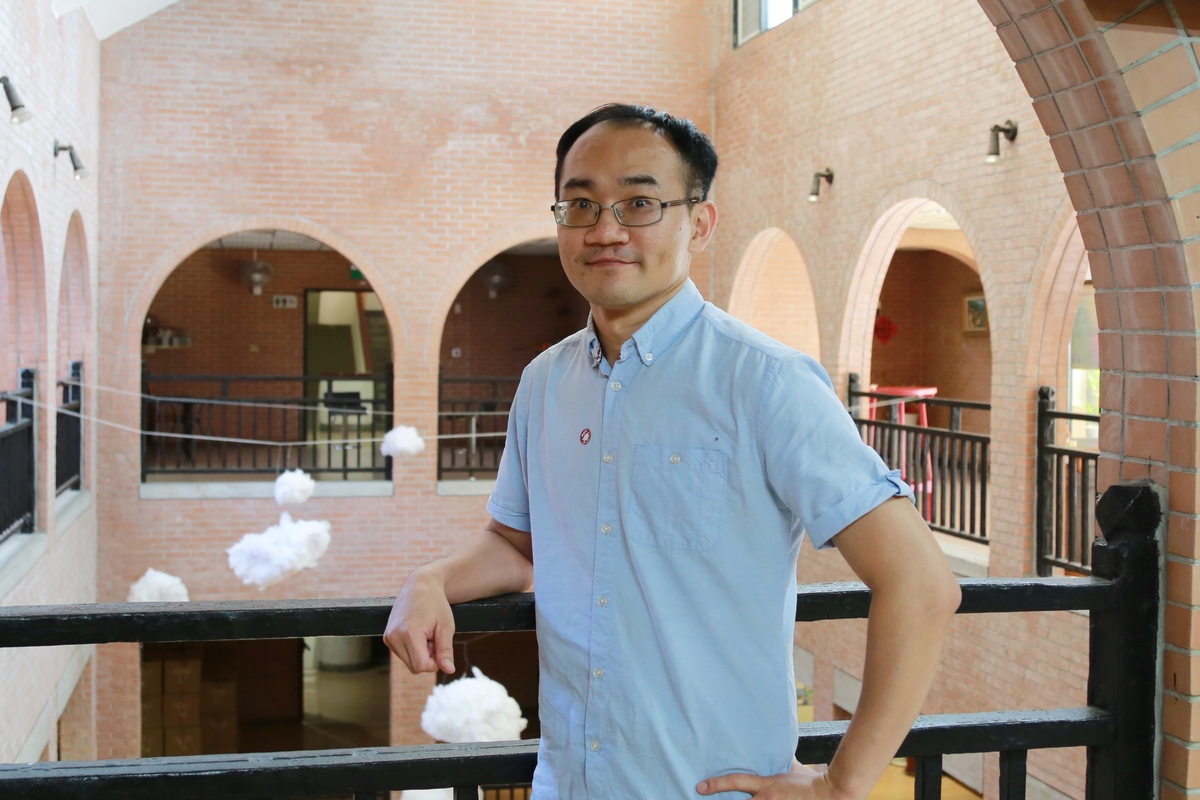Assistant Professor Shin-Ming Huang with his international research teams published research papers in 3 top international journals over the past 1.5 years


Assistant Professor Shin-Ming Huang of the Department of Physics at National Sun Yat-sen University was not only one of 17 Highly Cited Researchers in Taiwan in 2019, but also, in the past 1.5 years, he published research results in 3 top international journals: Nature, Nature Materials and Science, together with his international research teams. His stunning research capacity drew international attention to academic circles in Taiwan specializing in physics.
In 2018, the international team consisting of Assistant Professor of the Department of Physics Shin-Ming Huang, Professor M. Zahid Hasan of the Department of Physics at Princeton University, Associate Research Fellow Hsin Lin of the Institute of Physics, Academia Sinica, and Professor Tay-Rong Chang of the Department of Physics, National Cheng Kung University, published their research paper on non-magnetic chiral crystals: “Topological quantum properties of chiral crystals” in Nature Materials. Using first-principles calculations and theoretical analysis, the team predicted the existence of ubiquitous Kramers-Weyl fermions in non-magnetic chiral crystals. Weyl fermions are a type of topologically-protected massless chiral fermions, characterized by geometric singularity and atypical quantum properties.
In 2019, the international research team of Assistant Professor Huang discovered a magnetic Weyl semimetal Co2MnGa, and, thanks to theoretical calculations and laboratory experiments, clearly noted the presence of Weyl fermion lines and the strong ferromagnetism of the material, which causes it to exhibit anomalous Hall effect in room temperature. In the future, voltage can be applied for energy loss-free transmission in the vertical direction. The research team published their results in a paper “Discovery of topological Weyl fermion lines and drumhead surface states in a room temperature magnet” in Science, a top international journal. Magnetic Weyl semimetals are materials which surface is characterized by exceptional electronic conductivity. This research result is an important direction for the future development of quantum computers and spin-dependent electron transport.
This year (2020), Assistant Professor Huang collaborated with professors of the Department of Physics, Massachusetts Institute of Technology, Nuh Gedik, and Pablo Jarillo-Herrero and published their research result - Spontaneous gyrotropic electronic order in a transition-metal dichalcogenide in Nature, an internationally-acknowledged journal.
This time the research team manipulated the gyrotropic order in transition-metal dichalcogenide 1T-TiSe2 by using circularly polarized light at high temperature as the induction to the low-temperature phase. The discovery of the dichotomy in the photocurrent proved clearly that photoinduced polarizability changes the chirality of the system.
Assistant Professor Huang explained that the word “chirality” comes from the Greek word for “hand”. This is a property of objects that cannot be mapped to their mirror image. If you observe the reflection of your right hand in the mirror, the reflected image will not be a right, but a left hand. The right and the left hand can be differentiated, just like the structure of the double helix of DNA, which, according to the relative position of the helixes can be right- or left-handed.
Articles:
Nature https://www.nature.com/articles/s41586-020-2011-8
Science https://science.sciencemag.org/content/365/6459/1278.abstract
Nature Materials https://www.nature.com/articles/s41563-018-0169-3
In 2018, the international team consisting of Assistant Professor of the Department of Physics Shin-Ming Huang, Professor M. Zahid Hasan of the Department of Physics at Princeton University, Associate Research Fellow Hsin Lin of the Institute of Physics, Academia Sinica, and Professor Tay-Rong Chang of the Department of Physics, National Cheng Kung University, published their research paper on non-magnetic chiral crystals: “Topological quantum properties of chiral crystals” in Nature Materials. Using first-principles calculations and theoretical analysis, the team predicted the existence of ubiquitous Kramers-Weyl fermions in non-magnetic chiral crystals. Weyl fermions are a type of topologically-protected massless chiral fermions, characterized by geometric singularity and atypical quantum properties.
In 2019, the international research team of Assistant Professor Huang discovered a magnetic Weyl semimetal Co2MnGa, and, thanks to theoretical calculations and laboratory experiments, clearly noted the presence of Weyl fermion lines and the strong ferromagnetism of the material, which causes it to exhibit anomalous Hall effect in room temperature. In the future, voltage can be applied for energy loss-free transmission in the vertical direction. The research team published their results in a paper “Discovery of topological Weyl fermion lines and drumhead surface states in a room temperature magnet” in Science, a top international journal. Magnetic Weyl semimetals are materials which surface is characterized by exceptional electronic conductivity. This research result is an important direction for the future development of quantum computers and spin-dependent electron transport.
This year (2020), Assistant Professor Huang collaborated with professors of the Department of Physics, Massachusetts Institute of Technology, Nuh Gedik, and Pablo Jarillo-Herrero and published their research result - Spontaneous gyrotropic electronic order in a transition-metal dichalcogenide in Nature, an internationally-acknowledged journal.
This time the research team manipulated the gyrotropic order in transition-metal dichalcogenide 1T-TiSe2 by using circularly polarized light at high temperature as the induction to the low-temperature phase. The discovery of the dichotomy in the photocurrent proved clearly that photoinduced polarizability changes the chirality of the system.
Assistant Professor Huang explained that the word “chirality” comes from the Greek word for “hand”. This is a property of objects that cannot be mapped to their mirror image. If you observe the reflection of your right hand in the mirror, the reflected image will not be a right, but a left hand. The right and the left hand can be differentiated, just like the structure of the double helix of DNA, which, according to the relative position of the helixes can be right- or left-handed.
Articles:
Nature https://www.nature.com/articles/s41586-020-2011-8
Science https://science.sciencemag.org/content/365/6459/1278.abstract
Nature Materials https://www.nature.com/articles/s41563-018-0169-3
Click Num:
Share
